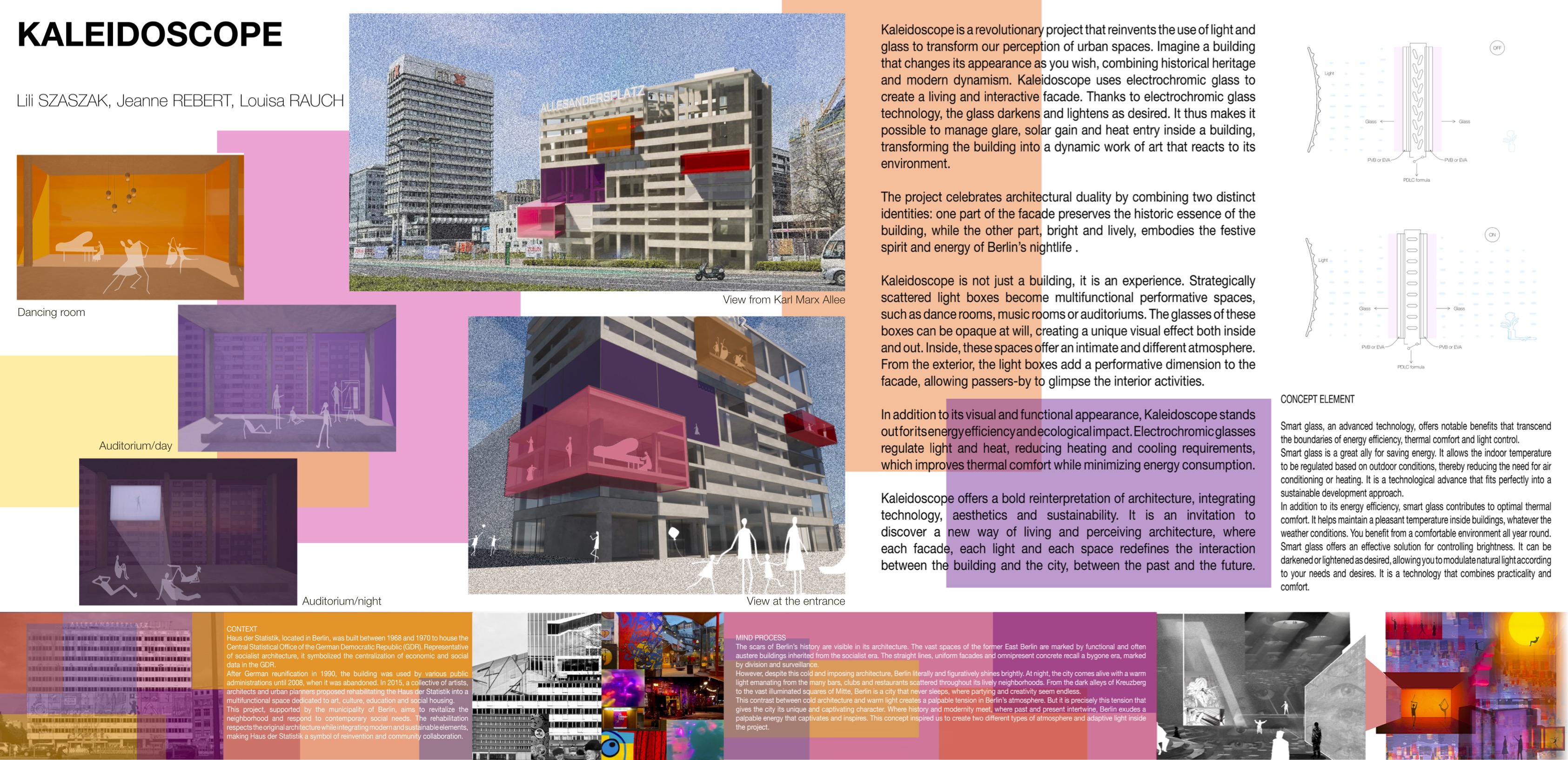2024 - Kaleidoscope

Category
Daylight Investigations - Region 1: Western Europe
Students
Louisa Rauch
Teacher
Claire Karsenty
School
Ecole nationale supérieure d' Architecture de Strasbourg
Country
France
Download
Download project board
Kaleidoscope is a revolutionary project that reinvents the use of light and glass to transform our perception of urban spaces. Imagine a building that changes its appearance as you wish, combining historical heritage and modern dynamism. Kaleidoscope uses electrochromic glass to create a living and interactive facade. Thanks to electrochromic glass technology, the glass darkens and lightens as desired. It thus makes it possible to manage glare, solar gain and heat entry inside a building, transforming the building into a dynamic work of art that reacts to its environment.
The project celebrates architectural duality by combining two distinct identities: one part of the facade preserves the historic essence of the building, while the other part, bright and lively, embodies the festive spirit and energy of Berlin’s nightlife. Kaleidoscope is not just a building, it is an experience. Strategically scattered light boxes become multifunctional performative spaces, such as dance rooms, music rooms or auditoriums. The glasses of these boxes can be opaque at will, creating a unique visual effect both inside and out. Inside, these spaces offer an intimate and different atmosphere. From the exterior, the light boxes add a performative dimension to the facade, allowing passers-by to glimpse the interior activities.
In addition to its visual and functional appearance, Kaleidoscope stands out for its energy efficiency and ecological impact. Electrochromic glasses regulate light and heat, reducing heating and cooling requirements, which improves thermal comfort while minimizing energy consumption. Kaleidoscope offers a bold reinterpretation of architecture, integrating technology, aesthetics and sustainability. It is an invitation to discover a new way of living and perceiving architecture, where each facade, each light and each space redefines the interaction between the building and the city, between the past and the future.

























